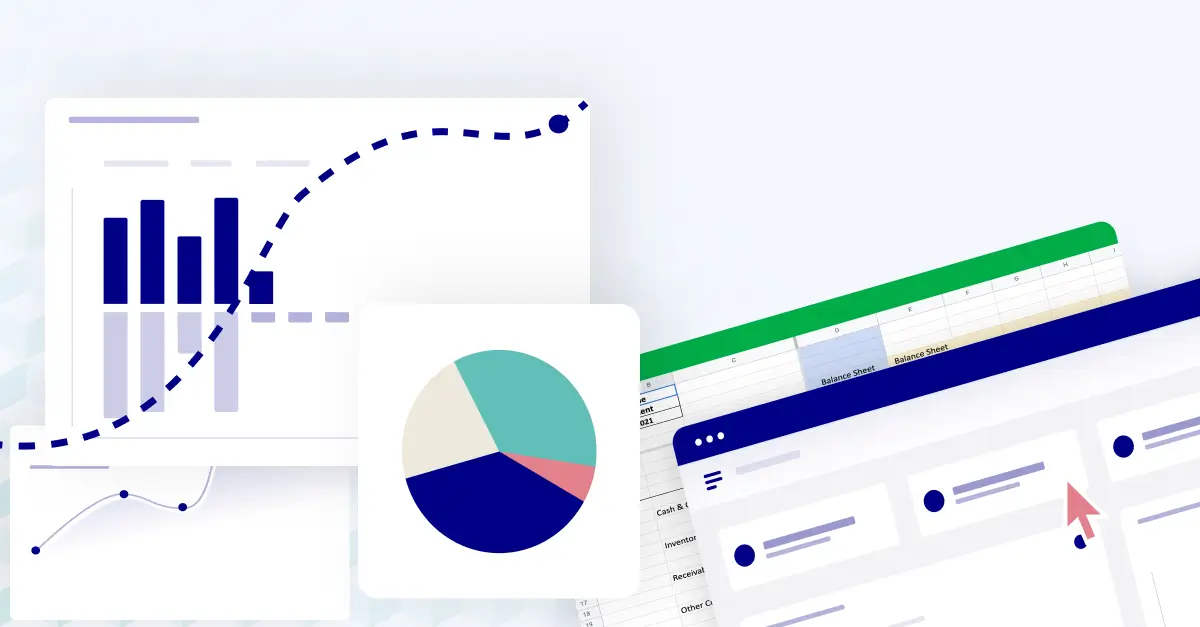Having a clear roadmap from first thought to the end result while using these best practices can help make it happen.
Step 1: determine objectives
This is both a best practice and a crucial first step during implementation.
Before choosing software, involve stakeholders in a group discussion about objectives. Decide what the software should accomplish and the goals surrounding implementation.
In the end, new software should help drive an organization down its strategic path.
Tying new software decisions to strategic business goals helps build a case for the system and provides the team with a core focus throughout the implementation process.
Step 2: choose the right software
Take the time to evaluate what the business needs from the new software. Consider these standard functions:
- Ability to customize
- Reporting capabilities
- Compliance and controls
- Usability and remote access
Then, evaluate how each option compares and stacks up against the competition. While finding everything a business needs in one software can be challenging, it’s important to balance the must-have features against the cost.
The best software increases efficiency for its users and frees up time for value-added activities.
In finance, this can mean migrating away from manual data entry or pulling reports together by hand, and instead, performing robust analysis to aid in strategic decision-making.
Another factor in choosing the right software is incorporating other existing business tools into the equation.
This could include CRM software that manages customer communication or inventory management software that organizes and tracks what products and materials a company has on hand.
Ensure the new software will integrate with programs the organization will continue to use.
Step 3: account for external consulting needs
If an external consulting service is needed for the implementation process, it’s important to factor that into the “all-in” expense for the software.
Sometimes these costs can be close to or just as much as the software cost!
Other times, the software company will have an in-house implementation team that companies can leverage during setup.
Even if a company is using outside help, it is still imperative to have a team of employees oversee the implementation process. Thes employees can be both a resource for the implementation team and help ensure the project is completed on time and within budget.
Note: Some software implementations can absorb a substantial amount of time—ensure each employee involved has the time to spare or shift their responsibilities as necessary.
Step 4: engage key stakeholders
The Finance Team will likely make the final decision on software, but it’s crucial to involve other departments in the choice and implementation process.
Gather feedback from departments that may be impacted by the implementation, even if only slightly.
Their insight is beneficial as it comes from another segment of the business, one that Finance may generally overlook.
Other departments may have features in mind that could significantly improve their workflow and it’s important to consider those.
Plus, the more included other departments feel during the process, the more excited they will be about the benefits that result from implementation.
Step 5: communicate, communicate, communicate
Communication is key to a successful implementation. When in doubt, over-communicate and don’t leave anyone out.
Send communications to different business segments and other departments with a small stake in the new software.
Focus on providing positive messaging about the software. Showcase the benefits of implementation and how the new features will boost business processes.
This all plays into getting everyone excited about the new system's value, rather than feeling uncertain or fearful.
When others are excited about the changes, it will increase engagement and adoption of the new processes.

Step 6: document everything
Create organized files to stay up-to-date with expectations.
Document everything from goals to budgets to timelines and implementation plans. Instead of hoping the team will remember everything discussed, having it documented makes sure nothing slips through the cracks.
Then, stick to the plan as best as possible.
Step 7: decide how much data to migrate
Migrating data from an old system into new software is usually necessary but can be time-consuming and come with its own challenges.
Instead of trying to migrate everything from day one, determine what needs to come through on the new software.
For example, companies should plan to migrate current customer and vendor data, but scrap any old or outdated information.
Consider some of the following:
- What do laws and regulations dictate as far as record-keeping?
- How much past data should realistically be incorporated into new reports?
- Is archiving the data a better option than transitioning the data?
Step 8: scrub and update data
Data records and methodology can also change as companies grow and change through the years.
That may mean very old data is inconsistently formatted compared to data from the past several years. After process updates and ever-changing business needs, it’s common for old data to need a good clean-up.
The problem is that organizations rarely take the time to perform this work because it may not have a large enough benefit for the time it takes.
During a software implementation, however, all the migrated data must be formatted the same way. A good data scrub helps ensure that data transfers seamlessly into the new software without hang-ups or errors.
Implementing new software also creates the perfect opportunity to update the way data is organized in the system. If accounts need to be renamed or renumbered, or the entire chart of accounts needs a refresh, a software implementation is a perfect time to do it.
Not only is the data already being reviewed and manipulated, but it will give the Finance Team a fresh starting point once the new software is in place.
Make the changes before the go-live date so all the updates are waiting and ready in the new system.
Step 9: plan the installation process
Create a schedule to help keep the project on track. Try to break large tasks into smaller pieces and assign appropriate deadlines. Consider how different project parts play into one another to avoid bottlenecks.
Some pieces may need to be completed before other tasks can be started. It’s much better to take the time to plan around that upfront rather than getting knee-deep in the project and hitting a wall.
Delays can happen, so it is important to plan for them. It’s common to run into hangups and have to re-evaluate as implementation progresses.
However, delays shouldn’t be a result of scope creep!
Scope creep involves adding more tasks to the project as implementation is moving along. Specifically, adding tasks that weren’t part of the original plan.
It’s common during implementations but should be managed and mitigated as best as possible.
Step 10: measure progress regularly
It’s never too early to start tracking progress. The earlier you stay on top of deadlines, the better prepared the team is if the project falls behind schedule.
Delays can happen, but if they’re recognized immediately, the team can make adjustments to ensure the software is ready to use by the go-live date.
Aim to evaluate the project deadlines and schedule every week.
While the team should plan to work a little extra to hit each deadline, it’s ok to make the adjustments needed to keep expectations realistic.
The result: Smoothest. Implementation. Ever.
That’s the hope at least! While avoiding unexpected hangups or a small dose of scope creep is tough, using these techniques will help manage expectations among the implementation team.
Meet deadlines and kick the new software off with greater acceptance. All it takes is a fair amount of planning and tracking progress.
Keep the lines of communication open and ensure everyone is on the same page during the process.



.png)






